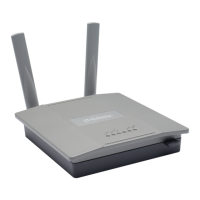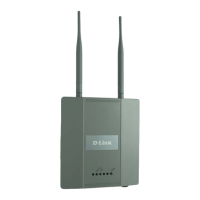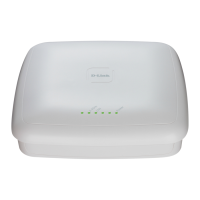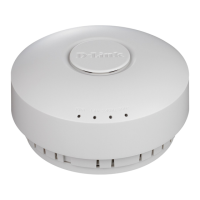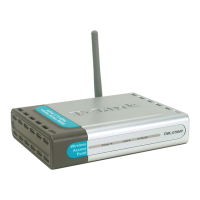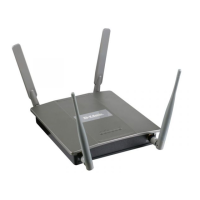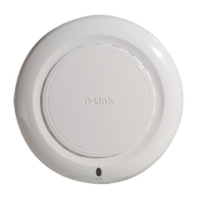Basic Setup
D-Link Unified Wired and Wireless Access System
Oct. 2015 Page 551
D-Link UWS User Manual
Mode The Mode defines the Physical Layer (PHY) standard the radio uses.
Select one of the following modes for each radio interface.
Radio 1 supports:
• IEEE 802.11a is a PHY standard that specifies operating in the 5 GHz U-NII band
using orthogonal frequency division multiplexing (OFDM). It supports data rates
ranging from 6 to 54 Mbps.
• IEEE 802.11a/n operates in the 5 GHz ISM band and includes support for both
802.11a and 802.11n devices. IEEE 802.11n is an extension of the 802.11
standard that includes multiple-input multiple-output (MIMO) technology. IEEE
802.11n supports data ranges of up to 248 Mbps and nearly twice the indoor
range of 802.11 b, 802.11g, and 802.11a.
• 5 GHz IEEE 802.11n is the recommended mode for networks with 802.11n
devices that operate in the 5 GHz frequency that do not need to support 802.11a
or 802.11b/g devices. IEEE 802.11n can achieve a higher throughput when it does
not need to be compatible with legacy devices (802.11b/g or 802.11a).
• IEEE 802.11a/n/ac operates in the 5 GHz ISM band and includes support for
802.11a, 802.11n and 802.11ac devices. IEEE 802.11ac is a wireless networking
standard in the 802.11 family, developed in the IEEE Standards Association
process, providing high-throughput wireless local area networks (WLANs) on the
5 GHz band. This is accomplished by extending the air interface concepts
embraced by 802.11n: wider RF bandwidth (up to 160 MHz), more MIMO spatial
streams (up to eight), down link multi-user MIMO (up to four clients), and high-
density modulation (up to 256-QAM).
• IEEE 802.11n/ac operates in the 5 GHz ISM band and includes support for both
802.11n and 802.11ac devices.
Radio 2 supports:
•IEEE 802.11b/g operates in the 2.4 GHz ISM band. IEEE 802.11b is an
enhancement of the initial 802.11 PHY to include 5.5 Mbps and 11 Mbps data
rates. It uses direct sequence spread spectrum (DSSS) or frequency hopping
spread spectrum (FHSS) as well as complementary code keying (CCK) to provide
the higher data rates. It supports data rates ranging from 1 to 11 Mbps. IEEE
802.11g is a higher speed extension (up to 54 Mbps) to the 802.11b PHY. It uses
orthogonal frequency division multiplexing (OFDM). It supports data rates
ranging from 1 to 54 Mbps.
• IEEE 802.11b/g/n operates in the 2.4 GHz ISM band and includes support for
802.11b, 802.11g, and 802.11n devices.
• 2.4 GHz IEEE 802.11n is the recommended mode for networks with 802.11n
devices that operate in the 2.4 GHz frequency that do not need to support
802.11a or 802.11b/g devices. IEEE 802.11n can achieve a higher throughput
when it does not need to be compatible with legacy devices (802.11b/g or
802.11a).
Note: The IEEE 802.11n standard prohibits static and dynamic WEP security modes.
Additionally, 802.11n requires the WPA cypher to be CCMP(AES). You cannot change
the radio mode to 802.11a/n or 802.11b/g/n if any networks currently associated
with the profile are configured with static WEP or dynamic WEP (IEEE 802.1X), or if
the CCMP(AES) WPA cypher is not enabled.
Table 328: Radio Settings (Cont.)
Field Description

